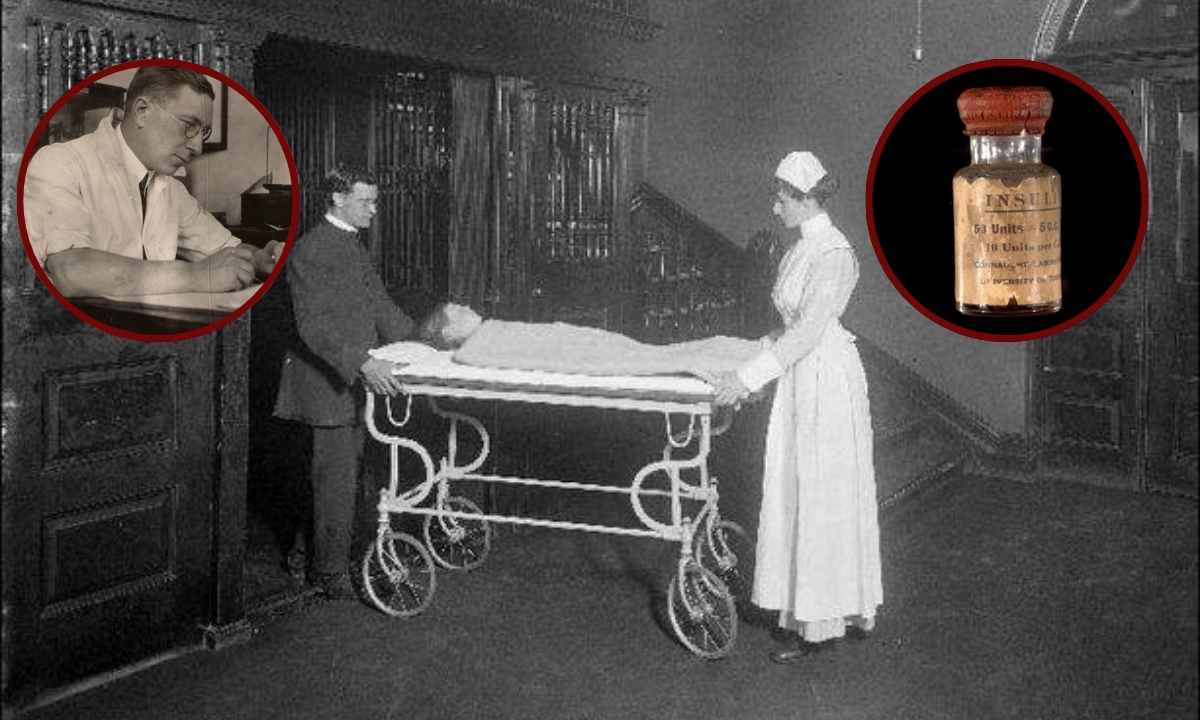A $1 Medicine That Saved Hundreds of Lives And Awoke Many From Comas!
In the 1800s, life was bleak for children diagnosed with Type 1 diabetes. A 10-year-old with this disease could expect to live only about a year. Fast forward to today, and people with Type 1 diabetes can live around 68 years on average. This is all thanks to the discovery of the hormone insulin by a team led by Dr. Frederick Banting and Charles Best.
The impact of this discovery in 1922 was immediate and deep. It saved countless lives and revolutionized the treatment of diabetes. Children who were once doomed to die within months not only survived but thrived, with some even awakening from comas. Remarkably, Banting and his team sold their patent for $1 to make the drug available to everyone.
“Insulin does not belong to me, it belongs to the world.”
Dr. Frederick Banting
The Dire Situation Before Insulin
Before the discovery of insulin, the prognosis for children with Type 1 diabetes was grim. The disease, recognized as early as 1500 BC, had no effective treatment. Ancient physicians noted symptoms like excessive urination and sweet urine but didn’t know the cause.
Treatments were harsh and ineffective. Most had to go through near-starvation diets aimed at keeping sugar from accumulating in the blood. The method included “careful dietetic regulations” and “fasting.” These methods offered little hope and resulted in a poor quality of life.
Historical records and journals show the suffering of patients and their families before insulin was available.

The Discovery of Insulin
In 1889, German physicians Oskar Minkowski and Joseph von Mering made a crucial discovery by linking the pancreas to diabetes. This set the stage for Banting and Best’s work. They faced many challenges but eventually succeeded in isolating insulin. Their first successful experiments on dogs showed a marked reduction in blood sugar levels.

First Human Trial: A dying 14-year-old!
The first human trials were conducted on Leonard Thompson. The 14-year-old boy was critically ill from diabetes. Leonard was on the verge of his death. Harry Thompson, father of Leonard was desperate for help. With the fear of losing his son, Harry agreed to let Dr. Banting, Dr. Best, and the team inject Leonard with an experimental new drug. By that time, it has not even been tried on another human being.
“Poorly nourished, pale, weight 65 pounds, hair falling out, the odor of acetone on the breath […] Previous to admission, he had been starved without evident benefit.”
Dr. Banting’s initial review of 14-year-old Leonard Thompson, the first person to receive Insulin.
After receiving insulin injections, Leonard’s blood sugar levels stabilized, and he miraculously recovered. He was given injections daily. This breakthrough was a turning point in the treatment of diabetes.
“The boy became brighter, more active, looked better and said he felt stronger.”
Dr. Banting’s records

The Impact of Insulin
The benefits of insulin were immediately apparent. Patients who received insulin saw dramatic improvements in their health and quality of life. Insulin was quickly mass-produced by companies like Eli Lilly. Statistics and case studies show significant increases in life expectancy and reductions in complications for diabetes patients after the introduction of insulin.
Some records mention an incredible moment in history with the discovery of insulin. The reports said Banting, Best, and Collip going from bed to bed in the Children’s Ward at Toronto General Hospital. They were injecting all the kids in the ward with the new purified extract. As they administered the drug to the last dying child, the first few woke up from their coma. The ward was said to have erupted with joy with the joyous cheers of families.

“Insulin Belongs to the World”
Banting, Best, and their colleagues sold the patents for insulin to the University of Toronto for $1 each. Banting famously said, “Insulin does not belong to me, it belongs to the world.” This philosophy ensured that insulin was accessible to everyone who needed it. This is of course regardless of their financial situation. Various initiatives and organizations helped distribute insulin worldwide, making it a life-saving treatment for millions.


The Legacy of Frederick Banting
Frederick Banting’s contributions to medicine extended beyond the discovery of insulin. He continued plenty of research on aviation medicine, silicosis, cancer, and the mechanisms of drowning. Banting received the Nobel Prize in Physiology or Medicine award in 1923, sharing the honor with Charles Best. His work continues to inspire medical research and innovation, particularly in endocrinology and diabetes treatment.

Conclusion
Since the discovery of insulin, there have been significant advancements in diabetes care. Including the development of synthetic insulin and insulin pumps. Banting’s vision of making life-saving treatments accessible to all continues to influence medical ethics and practices today.
The story of insulin is not just about a medical breakthrough. It’s about the dedication and selflessness of scientists. Their work has saved countless lives and continues to inspire hope.
Also read,







